Español
15 Thai dishes that aren't Pad Thai! Don't miss them!
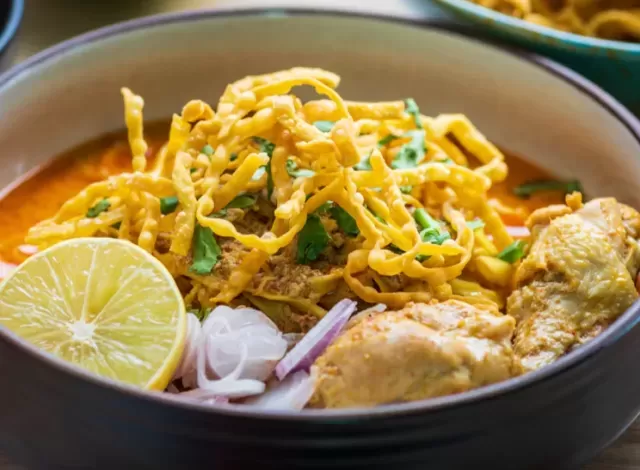
Immersing yourself in Thai cuisine is an explosion of flavors that balances sweet, salty, sour, and spicy like no other. Beyond the well-known Pad Thai, this country offers incredible culinary diversity, from rich curry soups in the north to fresh salads in the northeast and delicious stir-fries in the south. Here are 15 dishes you simply must try to familiarize yourself with Thai flavors.
1. Khao Soi:
Considered by many to be the signature dish of northern Thailand, this coconut noodle curry soup is a comforting delight. With Burmese influences, its base is a rich, creamy, mildly spicy yellow curry made with curry paste, coconut milk, turmeric, coriander, and soy sauce, among other ingredients, all slowly simmered. It features cooked egg noodles and is generously topped with crispy fried egg noodles. The protein, typically chicken (or beef/pork) thighs braised until tender, is served inside the soup. The finishing touches are the garnishes: pickled mustard leaves, shallots, lime, and ground chilies fried in oil. You can easily find it in Chiang Mai.
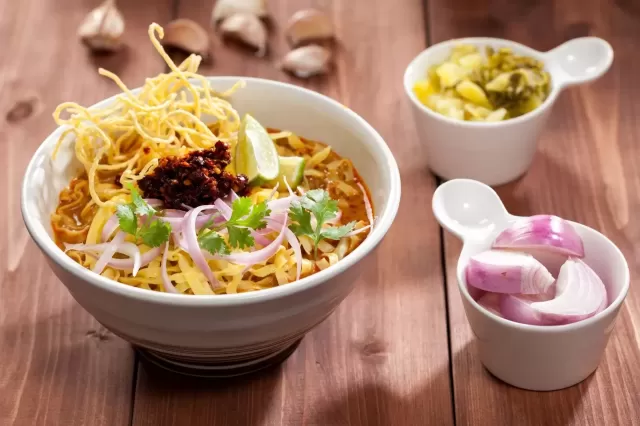
2. Guay Teow:
This is probably the most popular noodle soup in Thailand. "Guay Teow" refers to any noodle soup, whether it's made with chicken, pork, or beef (rarely vegetarian), and can include rice or egg noodles. Vendors often add wontons or dumplings to the broth. The magic lies in customizing it with the readily available condiments: sugar, dried chilies, lime juice, and fish sauce. It's a dish for any time of day.
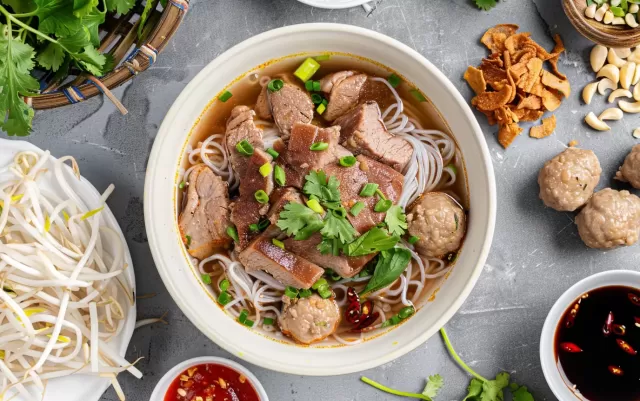
3. Tom Yum Kung:
This traditional shrimp soup is a symphony of aromas and flavors. The shrimp are simmered with a potent combination of herbs: lemongrass, kaffir lime leaves, blue ginger, and shallots, seasoned with local spices. The result is unmistakable: sweet, sour, salty, spicy, creamy, and slightly bitter, with vibrant colors. Originating in the Buddhist river communities of the central plains, its recipe is traditionally passed down through families and gatherings, though today it is also taught in restaurants and schools.
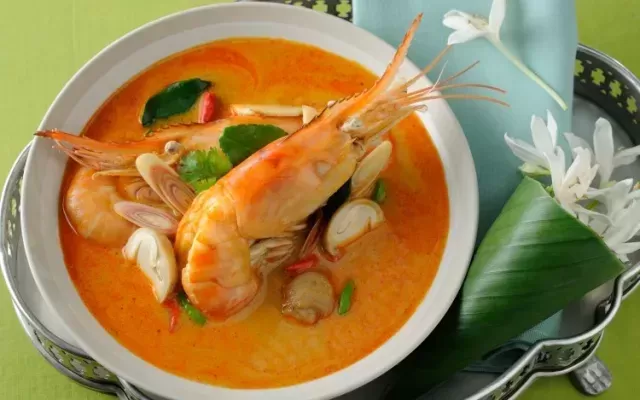
4. Tom Kha Gai:
A close relative of Tom Yum, this dish is the ideal choice if you prefer less spice but still want to enjoy authentic Thai flavors. The main difference is the generous amount of coconut milk, which creates a rich, creamy, and sweet soup. It typically includes chicken and, like most Thai dishes, is easily adapted for vegetarians by substituting some ingredients.
5. Som Tam:
Originating in Isaan, this green papaya salad is one of the most popular in the country. The classic version includes shredded green papaya, tomatoes, carrots, peanuts, dried shrimp, green beans, palm sugar, tamarind pulp, fish sauce, lime juice, garlic, and, crucially, plenty of chilies (the tiny but potent phrik kee nuu ). All the ingredients are pounded together in a mortar, blending and intensifying the flavors. Beware of the heat! The vendor will ask you how many chilies you want. Start with one or two; handling five or six requires practice.
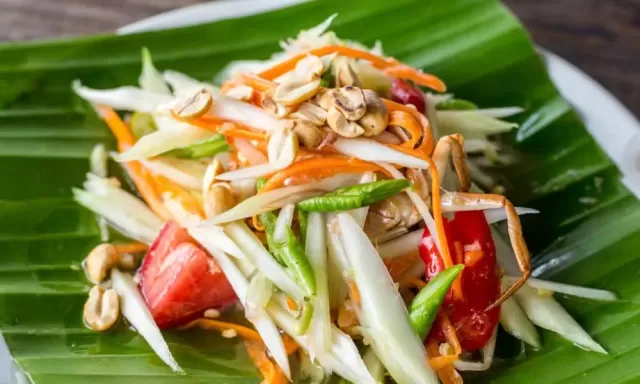
6. Yam Pla Dook Foo:
"Fluffy" and "crispy" define this unique dish. The catfish ("Pla Dook") is steamed, then shredded, and finally deep-fried until it achieves an incredibly airy and crispy texture, like clouds of fish. The magic lies in the combination with a green mango salad: the chunks of mango, crunchy peanuts, and sweet and spicy sauce contrast perfectly with the fried fish. It's an excellent appetizer to share or a perfect accompaniment to a cold beer.
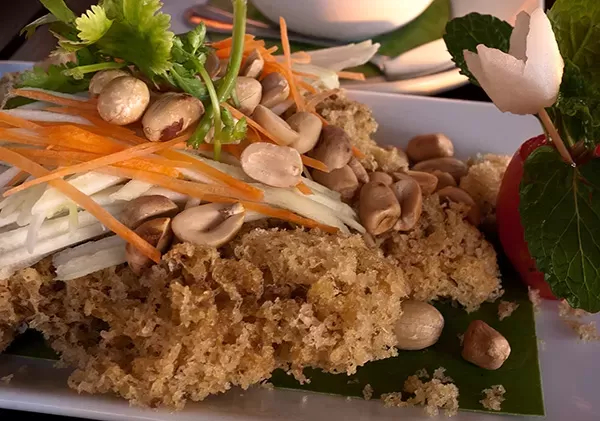
7. Yam Talay:
As its name suggests ("Yam" = to mix, "Talay" = sea), this is a traditional mixed seafood salad: shrimp, squid, mussels, and sometimes fish. These are mixed with fresh vegetables such as tomatoes, onions, and cucumber, creating a feast of colors and textures. A special dressing is added: a tangy and spicy blend of lime juice, fish sauce, chili, and garlic that enhances the natural flavors. This refreshing salad is enjoyed as an appetizer or a light main course, often served with sticky rice to balance the bold flavors.

8. Pad Krapow:
This classic stir-fry is typically made with minced pork or chicken (or tofu), generous amounts of chili, and the key ingredient: fresh Thai basil ( Krapow ). This basil has a distinctively strong and spicy flavor, quite different from Mediterranean basil. This dish is quite hot, but you can ask for "pet nit noi" (just a little spicy). If you have a very low tolerance for spice, avoid it! It's served over white rice and almost always topped with a fried egg with a runny yolk ("kai dao") which, when broken, enriches the entire dish. It definitely has an intense and addictive flavor.
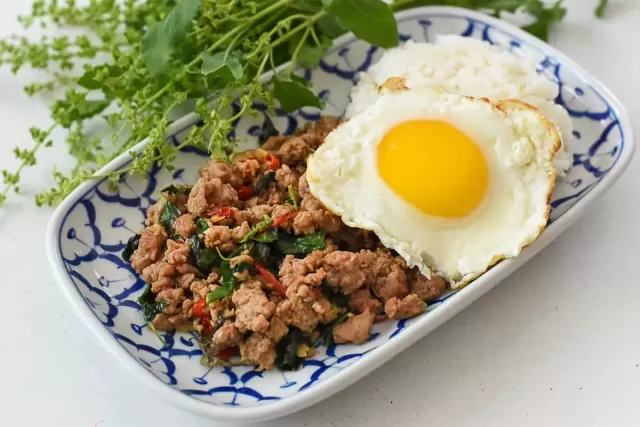
9. Gaeng Keow Wan:
Also known as Green Curry. Originating in central Thailand, this is the spiciest of the common Thai curries, yet balanced by the sweetness of coconut milk. Green curry paste, made with green chilies, garlic, shallots, coriander, cumin, lemongrass, and more, is key. When preparing it, it's typically first fried in a little coconut milk to release its aromas, then more milk, a touch of fish sauce, protein (chicken or fish are common), and vegetables like Thai eggplant are added. The result is sweet, aromatic, and umami-rich, with a spiciness level that varies depending on the chef's preference. It's generally quite hot, so serve it with plenty of rice!
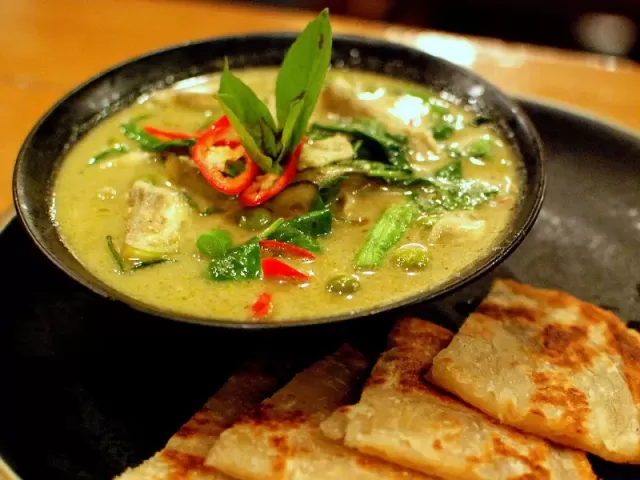
10. Kai Med Ma Muang:
This stir-fried chicken with cashews is a universal favorite. It combines tender pieces of chicken with crunchy cashews in a flavorful, slightly sweet sauce (thanks to soy sauce and often honey). It typically includes onions, chilies, peppers, mushrooms, and whatever other vegetables the chef has on hand.
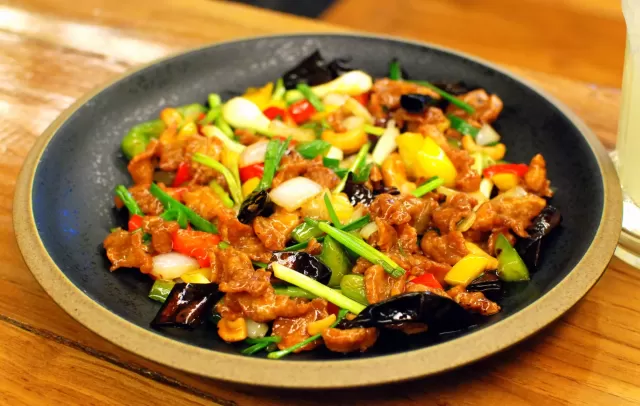
11. Khao Niew Ma Muang:
Look no further than the classic mango sticky rice. It's Thailand's most famous dessert for good reason. White sticky rice is steamed and then macerated in sweet coconut milk. It's served with generous slices of fresh, juicy mango and topped with more coconut sauce (often slightly salted) and sometimes crunchy mung beans. Condensed milk is the perfect finishing touch. Simple, yet absolutely delicious.

12. Gaeng Hua Sapparot Kap Goong:
This Thai red curry is a perfect blend of hot and sweet. Originating from central Thailand, it's milder than other red curries thanks to the fresh pineapple chunks that add natural sweetness. Coconut milk contributes creaminess and further sweetness. While various types of seafood can be added, shrimp ("Goong") are the local favorite.
13. Thawt Man Goong:
These fried shrimp croquettes may not be the lightest, but they are incredibly flavorful. They work well as an appetizer or a main course. This dish is typically made with shrimp, red curry paste, some kind of finely chopped vegetable (such as mung beans), and a mix of fresh herbs. The classic accompaniment is a sweet and sour cucumber dip, although sweet chili sauce is also popular.
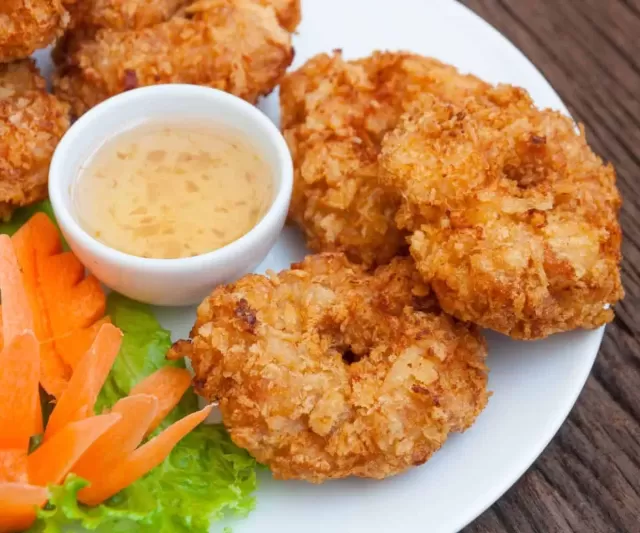
14. Pla Tod Kamin:
Many iconic southern Thai dishes feature turmeric, a root in the ginger family that imparts a bold flavor and a deep golden color. In Pla Tod Kamin, whole or filleted fish is marinated in a paste made from crushed turmeric and garlic. It is then deep-fried until crispy and golden brown. The turmeric infuses the fish with its unique flavor.
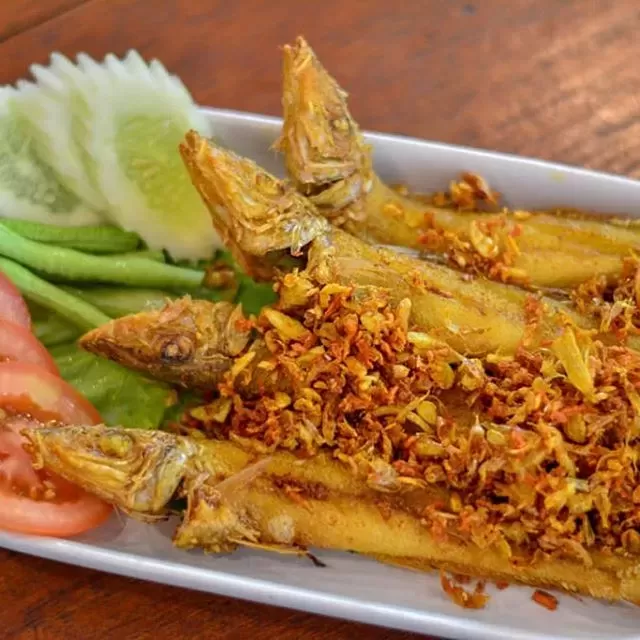
15. Satay:
The creamy satay skewers of southern Thailand show the influence of Malaysia and Indonesia. Meat (mainly pork or chicken, sometimes beef) is marinated in a spiced mixture, grilled over charcoal, and served with its signature thick, creamy, red curry-based peanut sauce. It is often accompanied by a pickled and sour salad (ajat).
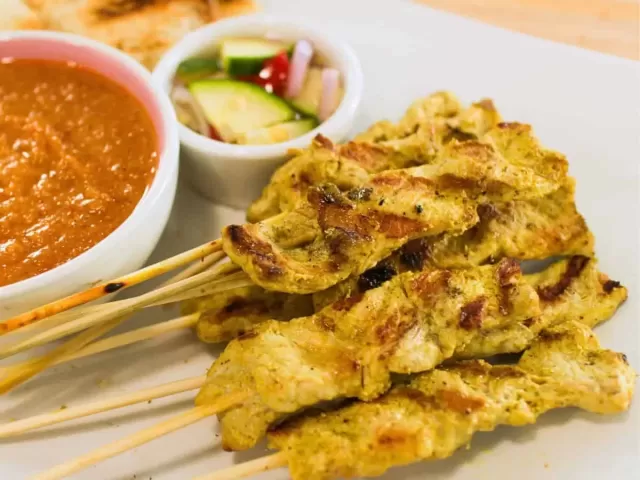
This list is just an introduction to the myriad options available. What are you waiting for to begin your Thai culinary adventure?
